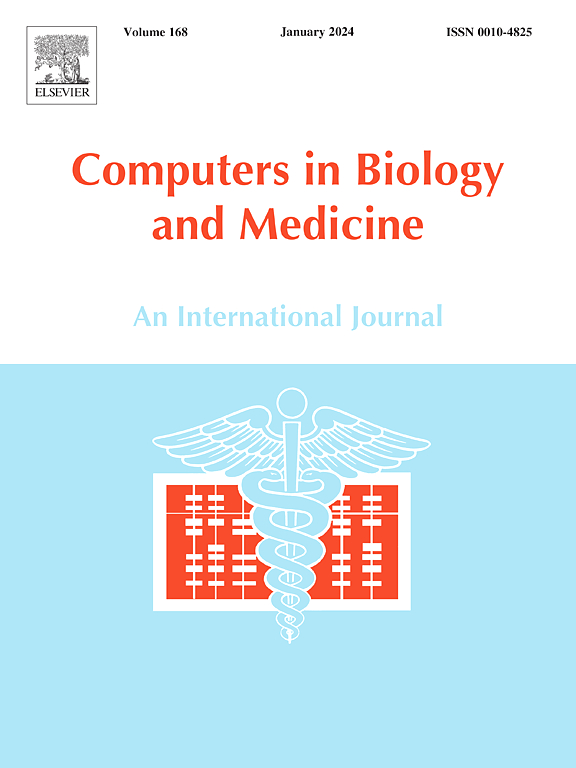Automatic transformer-based grading of multiple retinal inflammatory signs in uveitis on fluorescein angiography
IF 7
2区 医学
Q1 BIOLOGY
引用次数: 0
Abstract
Background
Grading fluorescein angiography (FA) for uveitis is complex, often leading to the oversight of retinal inflammation in clinical studies. This study aims to develop an automated method for grading retinal inflammation.
Methods
Patients from Jules-Gonin Eye Hospital with active or resolved uveitis who underwent FA between 2018 and 2021 were included. FAs were acquired using a standardized protocol, anonymized, and annotated following the Angiography Scoring for Uveitis Working Group criteria, for four inflammatory signs of the posterior pole. Intergrader agreement was assessed by four independent graders. Four deep learning transformer models were developed, and performance was evaluated using the Ordinal Classification Index, accuracy, F1 scores, and Kappa scores. Saliency analysis was employed to visualize model predictions.
Findings
A total of 543 patients (1042 eyes, 40987 images) were included in the study. The models closely matched expert graders in detecting vascular leakage (F1-score = 0·87, 1-OCI = 0·89), capillary leakage (F1-score = 0·86, 1-OCI = 0·89), macular edema (F1-score = 0·82, 1-OCI = 0·86), and optic disc hyperfluorescence (F1-score = 0·72, 1-OCI = 0·85). Saliency analysis confirmed that the models focused on relevant retinal structures. The mean intergrader agreement across all inflammatory signs was F1-score = 0·79 and 1-OCI = 0·83.
Interpretation
We developed a vision transformer-based model for the automatic grading of retinal inflammation in uveitis, utilizing the largest dataset of FAs in uveitis to date. This approach provides significant clinical benefits for the evaluation of uveitis and paves the way for future advancements, including the identification of novel biomarkers through the integration of clinical data and other modalities.
基于荧光素血管造影的葡萄膜炎多重视网膜炎症征象自动分级
背景:葡萄膜炎的分级荧光素血管造影(FA)是复杂的,经常导致在临床研究中忽视视网膜炎症。本研究旨在开发一种自动分级视网膜炎症的方法。方法纳入2018年至2021年期间来自Jules-Gonin眼科医院的患有活动性或消退性葡萄膜炎的患者。FAs采用标准化方案,匿名,并按照葡萄膜炎工作组标准的血管造影评分进行注释,用于后极的四种炎症体征。年级间协议由四名独立评分员进行评估。开发了四种深度学习转换模型,并使用序数分类指数、准确性、F1分数和Kappa分数对其性能进行了评估。显著性分析用于模型预测的可视化。结果共纳入543例患者(1042只眼,40987张图像)。该模型在检测血管渗漏(F1-score = 0.87, 1-OCI = 0.89)、毛细血管渗漏(F1-score = 0.86, 1-OCI = 0.89)、黄斑水肿(F1-score = 0.82, 1-OCI = 0.86)和视盘高荧光(F1-score = 0.72, 1-OCI = 0.85)方面与专家评分相近。显著性分析证实模型聚焦于相关视网膜结构。所有炎症体征的平均评分一致性为F1-score = 0.79, 1-OCI = 0.83。我们利用迄今为止最大的葡萄膜炎FAs数据集,开发了一个基于视觉转换器的模型,用于葡萄膜炎视网膜炎症的自动分级。该方法为葡萄膜炎的评估提供了显著的临床益处,并为未来的进展铺平了道路,包括通过整合临床数据和其他方式识别新的生物标志物。
本文章由计算机程序翻译,如有差异,请以英文原文为准。
求助全文
约1分钟内获得全文
求助全文
来源期刊

Computers in biology and medicine
工程技术-工程:生物医学
CiteScore
11.70
自引率
10.40%
发文量
1086
审稿时长
74 days
期刊介绍:
Computers in Biology and Medicine is an international forum for sharing groundbreaking advancements in the use of computers in bioscience and medicine. This journal serves as a medium for communicating essential research, instruction, ideas, and information regarding the rapidly evolving field of computer applications in these domains. By encouraging the exchange of knowledge, we aim to facilitate progress and innovation in the utilization of computers in biology and medicine.
 求助内容:
求助内容: 应助结果提醒方式:
应助结果提醒方式:


